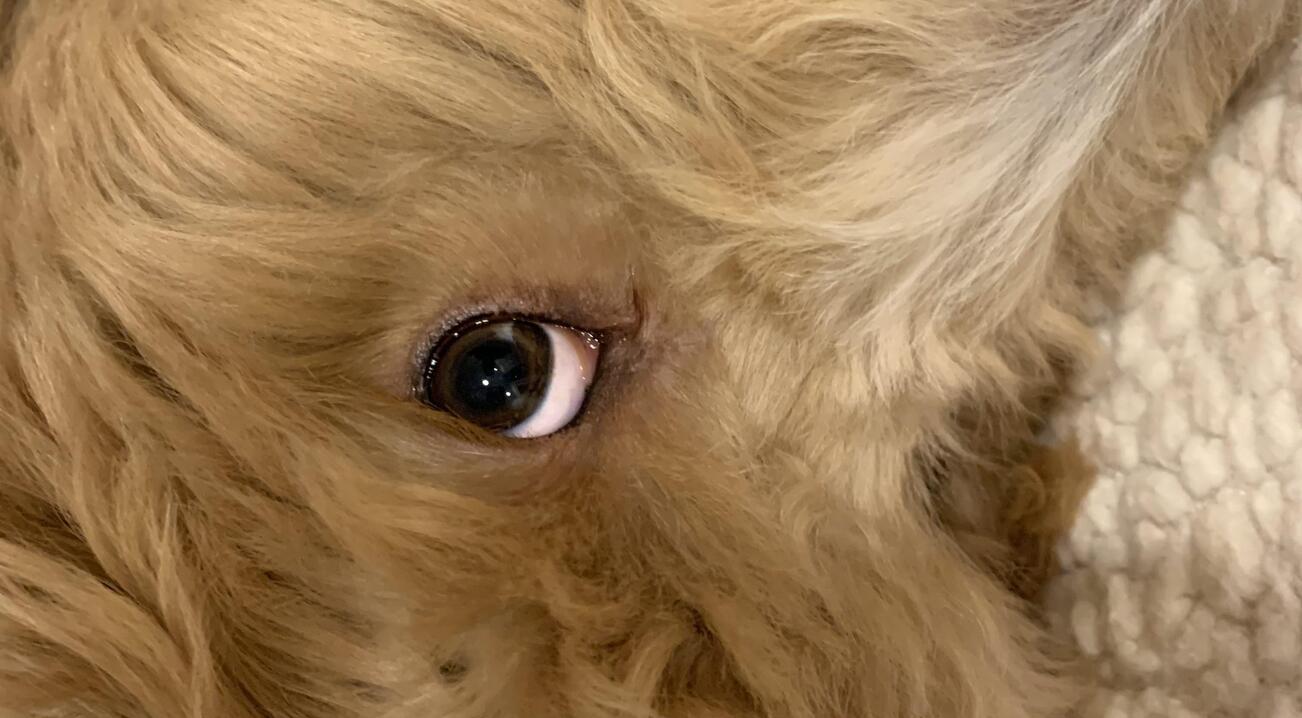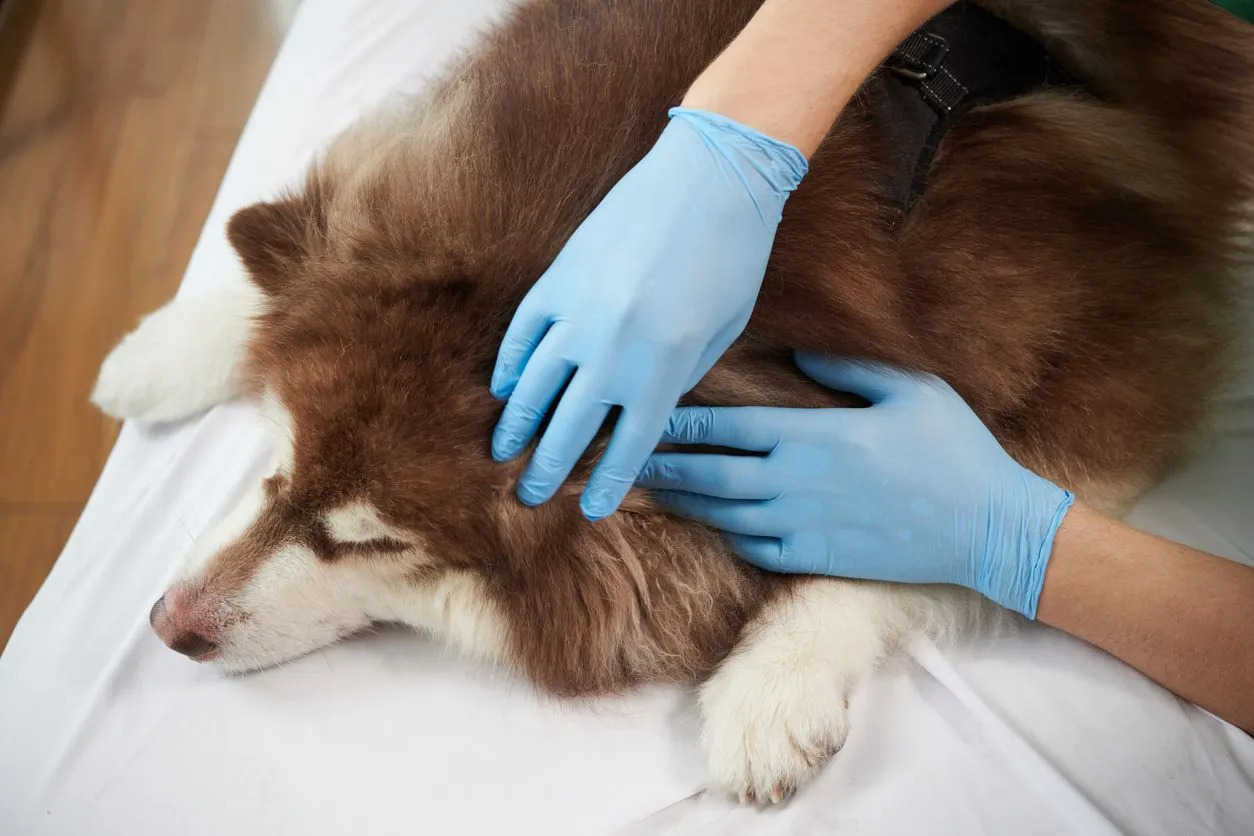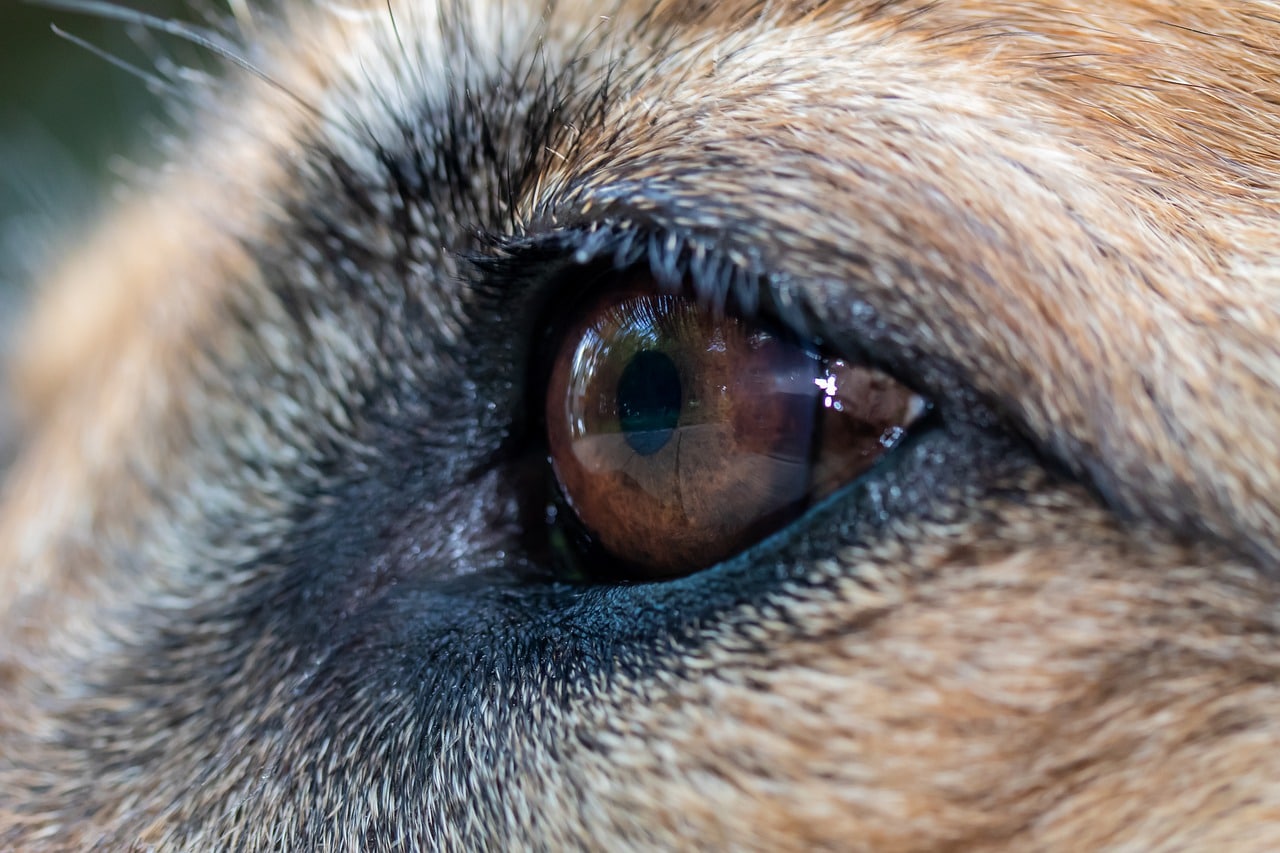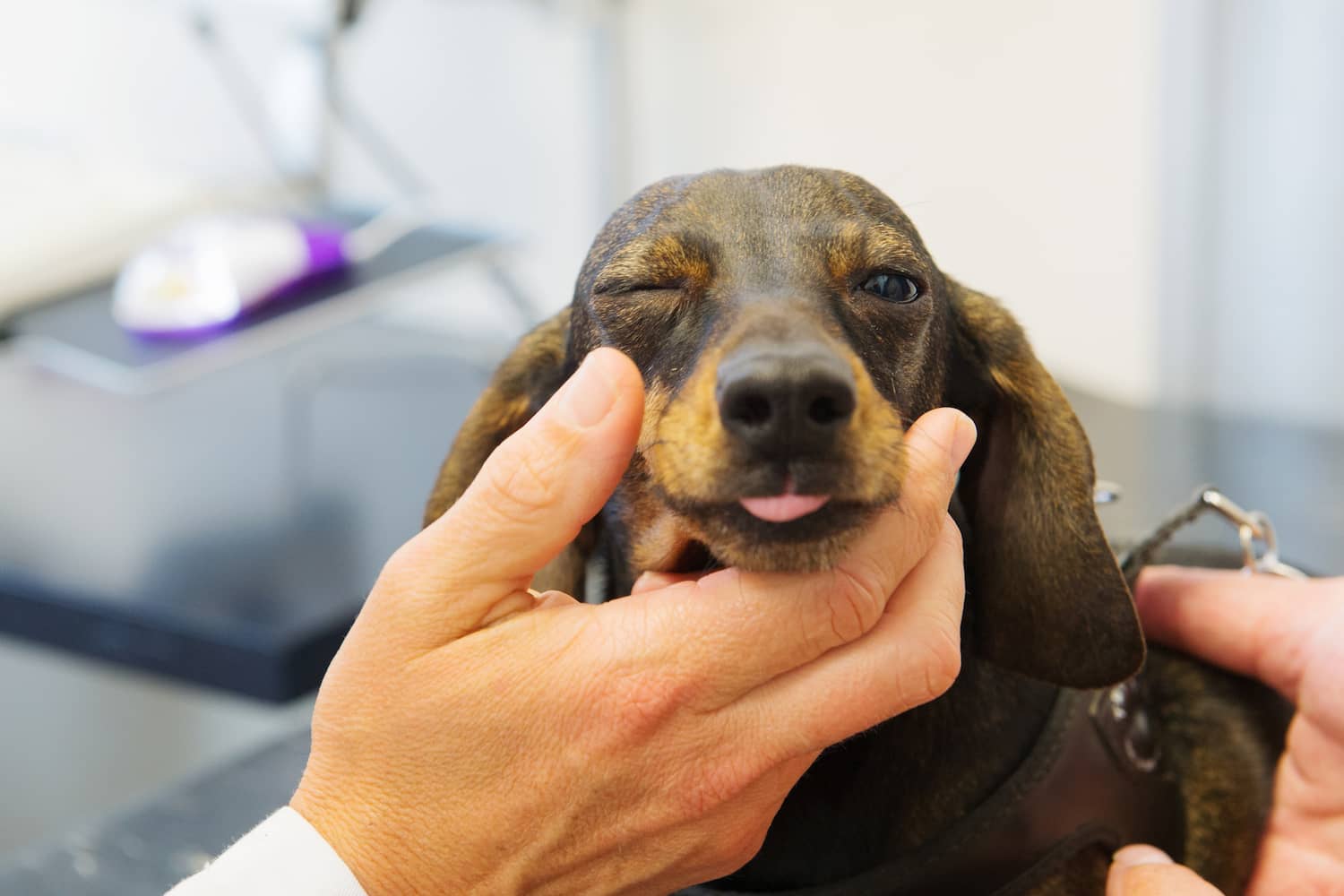Home>Health & Wellness>Common Health Issues>Eye and Ear Health>Why Does My Dog Have A White Spot In His Eye


Eye and Ear Health
Why Does My Dog Have A White Spot In His Eye
Published: February 12, 2024
Learn about the causes of white spots in your dog's eyes and how to maintain their eye and ear health. Find expert tips and advice here.
(Many of the links in this article redirect to a specific reviewed product. Your purchase of these products through affiliate links helps to generate commission for Pawsomeoldies.com, at no extra cost. Learn more)
Table of Contents
Introduction
As a devoted pet parent, it's natural to be attentive to your dog's well-being, especially when it comes to their eyes. Dogs, like humans, can experience various eye issues, one of which is the presence of white spots in their eyes. While these spots may seem innocuous at first glance, they can indicate underlying health concerns that necessitate prompt attention.
Understanding the potential causes and implications of white spots in your dog's eyes is crucial for ensuring their continued health and happiness. In this comprehensive guide, we will delve into the anatomy of a dog's eye, explore the common causes of white spots, discuss potential health concerns, review treatment options, and provide valuable insights on preventing these issues. Additionally, we will highlight the importance of seeking veterinary care when necessary.
By gaining a deeper understanding of this topic, you'll be better equipped to recognize any abnormalities in your dog's eyes and take proactive measures to safeguard their ocular health. Let's embark on this enlightening journey to unravel the mysteries behind the presence of white spots in your dog's eyes and empower you to provide the best possible care for your beloved canine companion.
Read more: Why Does My Dog Have A Red Spot In Her Eye
Understanding the Anatomy of a Dog's Eye
The intricate and remarkable structure of a dog's eye is a marvel of nature, designed to facilitate their visual perception and overall well-being. To comprehend the significance of white spots in a dog's eye, it's essential to gain insight into the anatomy of this vital sensory organ.
Cornea and Sclera
The outermost layer of a dog's eye consists of the cornea and sclera. The transparent cornea allows light to enter the eye, while the sclera, the white part of the eye, provides structural support and protection.
Iris and Pupil
The iris, a pigmented muscular structure, regulates the amount of light entering the eye through the pupil. This dynamic duo controls the size of the pupil in response to varying light conditions, enabling dogs to adapt to different environments.
Lens and Retina
The lens, situated behind the iris, focuses light onto the retina, which contains specialized cells called photoreceptors. These cells, known as rods and cones, play a pivotal role in converting light into electrical signals, initiating the visual process.
Read more: Why Does My Dog Have A Bump By Her Eye
Optic Nerve
The optic nerve transmits these electrical signals from the retina to the brain, where visual information is processed and interpreted. This intricate network facilitates the formation of visual images and the perception of the surrounding world.
Aqueous Humor and Vitreous Body
The aqueous humor, a clear fluid, maintains the shape of the eye and nourishes the cornea and lens. Meanwhile, the vitreous body, a gel-like substance, provides structural support to the eye and aids in maintaining its spherical shape.
By comprehending the multifaceted anatomy of a dog's eye, pet parents can appreciate the delicate balance required for optimal ocular function. This understanding serves as a foundation for recognizing any deviations from normalcy, such as the presence of white spots, and underscores the importance of proactive eye care for our canine companions.
Common Causes of White Spots in a Dog's Eye
White spots in a dog's eye can stem from various underlying causes, each with its own set of implications for the dog's ocular health. Understanding these potential triggers is crucial for identifying the root of the issue and seeking appropriate measures to address it effectively.
-
Cataracts: Cataracts, characterized by the clouding of the lens, can manifest as white or opaque spots in a dog's eye. This condition may develop due to aging, genetic predisposition, diabetes, or ocular trauma. Cataracts can impede vision and, if left untreated, lead to further complications.
-
Corneal Dystrophy: Certain breeds are prone to corneal dystrophy, a hereditary condition that causes lipid or calcium deposits to accumulate in the cornea, resulting in the formation of white or grayish spots. While this condition typically doesn't cause discomfort, it can affect vision in severe cases.
-
Uveitis: Inflammation of the uvea, the middle layer of the eye, can lead to the development of white spots due to cellular infiltrates or exudates. Uveitis may arise from infections, autoimmune disorders, trauma, or systemic diseases, necessitating prompt veterinary intervention.
-
Keratitis: When the cornea becomes inflamed, a condition known as keratitis, it can present with white or cloudy patches. Factors such as infections, foreign bodies, allergies, or anatomical abnormalities can contribute to the development of keratitis in dogs.
-
Lipid Deposits: Lipid or fat deposits can accumulate in the cornea, leading to the formation of white spots. This condition, known as lipid keratopathy, may result from metabolic disorders, dietary imbalances, or genetic predisposition.
-
Foreign Bodies: The presence of foreign bodies, such as debris or particles, in the eye can cause irritation and inflammation, resulting in the formation of white spots. Dogs that frequently engage in outdoor activities or have exposure to environmental hazards are particularly susceptible to this issue.
-
Infections: Bacterial, viral, or fungal infections affecting the eye can manifest as white spots due to the inflammatory response and the accumulation of pus or exudates. Prompt identification and treatment of the underlying infection are essential for preventing complications and preserving ocular health.
By recognizing these common causes of white spots in a dog's eye, pet parents can proactively monitor their furry companions for any signs of ocular abnormalities. Additionally, seeking timely veterinary evaluation and intervention is paramount for addressing these issues and ensuring the well-being of our beloved canine friends.
Potential Health Concerns Related to White Spots in a Dog's Eye
The presence of white spots in a dog's eye can signify potential health concerns that warrant careful attention and proactive measures. While these spots may initially appear benign, they can serve as indicators of underlying issues that have the potential to impact a dog's ocular health and overall well-being.
One of the primary health concerns associated with white spots in a dog's eye is the potential impairment of vision. Depending on the underlying cause, such as cataracts, corneal dystrophy, or lipid deposits, these white spots can obstruct the passage of light, leading to diminished visual acuity. Impaired vision can significantly impact a dog's quality of life, hindering their ability to navigate their surroundings, engage in activities, and interact with their human companions.
Furthermore, certain conditions that manifest as white spots, such as uveitis and keratitis, can cause discomfort and ocular irritation for affected dogs. Inflammation of the uvea or cornea can result in pain, redness, excessive tearing, and sensitivity to light, leading to considerable distress for the affected canine. Addressing these health concerns is crucial not only for preserving a dog's visual function but also for alleviating any discomfort or pain they may experience.
In addition to the immediate implications for ocular health, white spots in a dog's eye can serve as indicators of underlying systemic issues. For instance, the presence of lipid deposits or metabolic disorders contributing to the formation of white spots may signal broader health concerns that require comprehensive evaluation and management. By recognizing these potential systemic implications, pet parents can take a proactive approach to safeguarding their dog's overall health and well-being.
Moreover, untreated or unaddressed white spots in a dog's eye can lead to progressive complications, exacerbating the underlying issues and potentially causing irreversible damage to the eye structures. For instance, untreated cataracts can lead to secondary glaucoma and permanent vision loss, underscoring the importance of timely intervention and treatment for white spots in a dog's eye.
By acknowledging these potential health concerns related to white spots in a dog's eye, pet parents can prioritize proactive eye care and seek prompt veterinary evaluation when abnormalities are observed. This proactive approach is instrumental in addressing potential health concerns, preserving a dog's visual function, and promoting their overall ocular and systemic health.
Read more: Why Does My Dog Have One Dilated Eye?
Treatment Options for White Spots in a Dog's Eye
Addressing white spots in a dog's eye necessitates a tailored approach that aligns with the underlying cause and the dog's specific health status. Veterinary intervention is paramount for accurate diagnosis and the implementation of appropriate treatment strategies. The following are common treatment options for white spots in a dog's eye:
-
Medication: Depending on the underlying cause of the white spots, veterinarians may prescribe topical or oral medications to address inflammation, infection, or underlying systemic issues. Antibiotic, antifungal, or anti-inflammatory medications may be administered to alleviate discomfort, combat infections, and promote healing.
-
Surgical Intervention: In cases where white spots result from conditions such as cataracts or corneal dystrophy, surgical intervention may be recommended. Cataract surgery, involving the removal of the affected lens and its replacement with an artificial intraocular lens, can restore vision and alleviate the presence of white spots. Similarly, surgical procedures may be employed to address corneal dystrophy or remove lipid deposits, promoting ocular health and visual function.
-
Lifestyle Modifications: For certain conditions contributing to the formation of white spots, such as lipid keratopathy or metabolic disorders, dietary adjustments and lifestyle modifications may be recommended. This can include the implementation of specialized diets, nutritional supplements, or environmental changes to manage underlying systemic issues and prevent the progression of ocular abnormalities.
-
Ocular Hygiene and Care: Proper ocular hygiene and care are essential components of managing white spots in a dog's eye. This may involve the regular application of prescribed eye drops or ointments, gentle cleaning of the eye area, and the avoidance of potential irritants or allergens. Additionally, adhering to veterinary recommendations for ongoing monitoring and follow-up care is crucial for evaluating treatment efficacy and addressing any emerging concerns.
-
Complementary Therapies: In some cases, complementary therapies such as acupuncture, herbal remedies, or nutritional supplements may be integrated into the treatment plan to support ocular health and overall well-being. These adjunctive approaches can complement conventional treatments and contribute to a holistic approach to addressing white spots in a dog's eye.
It's important to note that the selection of treatment options is contingent upon a thorough veterinary assessment and the specific needs of the individual dog. Pet parents should prioritize open communication with their veterinarian, adhere to prescribed treatment regimens, and remain vigilant for any changes in their dog's ocular health. By proactively addressing white spots in a dog's eye through appropriate treatment measures, pet parents can contribute to the preservation of their dog's visual function and overall ocular well-being.
Preventing White Spots in a Dog's Eye
Preventing white spots in a dog's eye encompasses proactive measures aimed at preserving ocular health and minimizing the risk of ocular abnormalities. By implementing the following strategies, pet parents can play a pivotal role in safeguarding their dog's vision and overall well-being.
Regular Veterinary Examinations
Scheduling routine veterinary examinations is fundamental for monitoring a dog's ocular health and detecting any early signs of potential issues. Veterinarians can conduct comprehensive eye assessments, including examinations of the cornea, lens, retina, and overall ocular function. Early detection of predisposing factors or emerging abnormalities enables timely intervention and preventive measures, contributing to the long-term health of a dog's eyes.
Balanced Nutrition
Providing a balanced and nutritious diet is essential for supporting a dog's overall health, including their ocular well-being. Diets rich in essential nutrients, such as vitamins A, C, and E, as well as omega-3 fatty acids, can promote ocular health and reduce the risk of certain ocular conditions. Pet parents should consult with their veterinarian to ensure that their dog's diet aligns with their specific nutritional needs, thereby minimizing the likelihood of metabolic imbalances that could contribute to the development of white spots in the eyes.
Read more: Why Is My Dog’s Eye White
Environmental Safety
Creating a safe and hazard-free environment for dogs can help prevent ocular trauma and exposure to potential irritants. Pet parents should safeguard their living spaces and outdoor areas to minimize the risk of foreign bodies, chemicals, or sharp objects that could pose a threat to their dog's eyes. Additionally, during outdoor activities, such as walks or playtime, using protective eyewear designed for dogs can offer an extra layer of defense against environmental hazards.
Ocular Hygiene
Maintaining proper ocular hygiene is crucial for preventing ocular issues, including the formation of white spots. Regularly cleaning the area around a dog's eyes, using veterinarian-recommended eye wipes or solutions, can help remove debris, reduce the risk of infections, and promote ocular comfort. Additionally, pet parents should be mindful of any ocular discharge, redness, or signs of irritation, promptly seeking veterinary guidance when such symptoms arise.
Sun Protection
Just like humans, dogs can be susceptible to the harmful effects of ultraviolet (UV) radiation. Prolonged exposure to UV rays can contribute to ocular conditions, including the development of cataracts and other vision-related issues. Utilizing dog-specific UV-protective eyewear or seeking shade during sunny days can help mitigate the risk of UV-induced ocular damage, thereby contributing to the prevention of white spots and other ocular abnormalities.
By embracing these preventive measures, pet parents can actively contribute to the preservation of their dog's ocular health and reduce the likelihood of white spots and related issues. Prioritizing proactive eye care and remaining attentive to any changes in a dog's ocular health empowers pet parents to be proactive advocates for their beloved canine companions' visual well-being.
When to Seek Veterinary Care
Recognizing the appropriate timing to seek veterinary care for your dog's eye health is paramount in ensuring timely intervention and addressing potential concerns. Several indicators necessitate prompt veterinary attention to safeguard your dog's ocular well-being.
First and foremost, any noticeable changes in your dog's eyes, including the sudden appearance of white spots, cloudiness, or unusual discoloration, warrant immediate veterinary evaluation. These visual alterations may signify underlying conditions that require professional assessment and intervention.
Furthermore, if your dog displays signs of ocular discomfort or distress, such as excessive blinking, rubbing or pawing at the eyes, squinting, or increased tear production, it is imperative to seek veterinary care promptly. These behaviors may indicate ocular irritation, inflammation, or pain, necessitating thorough examination and targeted treatment.
In addition, any instances of ocular discharge, whether clear, cloudy, or discolored, should prompt a veterinary consultation. Ocular discharge can be indicative of infections, foreign body presence, or underlying systemic issues, all of which require veterinary expertise for accurate diagnosis and management.
Moreover, if you observe changes in your dog's visual behavior, such as reluctance to engage in activities that require visual acuity, bumping into objects, or displaying hesitance in unfamiliar environments, it is essential to prioritize veterinary assessment. These behavioral shifts may signal compromised vision, necessitating comprehensive ocular evaluation and potential treatment.
Additionally, any trauma or injury to the eye, regardless of the presence of visible white spots, mandates immediate veterinary care. Ocular trauma can lead to a range of issues, including corneal abrasions, foreign body retention, or structural damage, all of which require timely veterinary intervention to prevent further complications.
Lastly, if your dog has been diagnosed with pre-existing ocular conditions, such as cataracts, corneal dystrophy, or uveitis, regular veterinary follow-ups and proactive monitoring are essential. Any deviations from the established treatment plan or the emergence of new symptoms should prompt veterinary consultation to ensure ongoing ocular health management.
By remaining vigilant for these indicators and promptly seeking veterinary care when necessary, pet parents can prioritize their dog's ocular health and contribute to the preservation of their visual function and overall well-being. Vigilance, proactive communication with veterinary professionals, and a commitment to timely intervention are integral components of advocating for the best possible care for our beloved canine companions.












